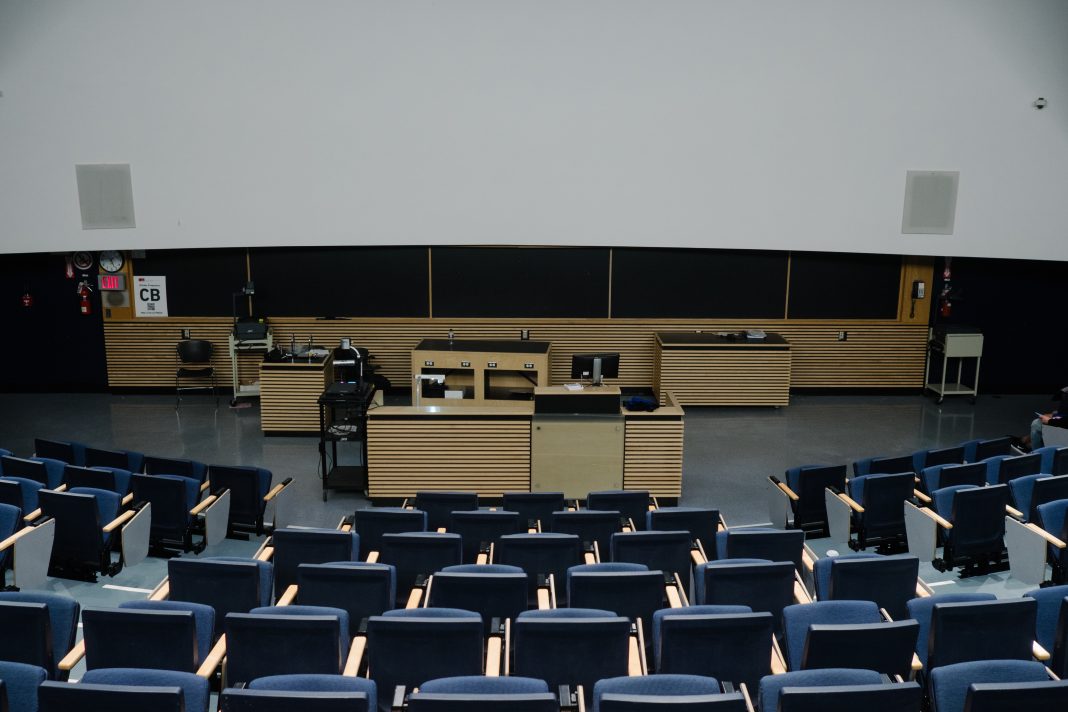Written by: Srijani Datta
The Canadian Center for Policy Alternatives (CCPA) released a report concluding that around 53% of all faculty appointments in 2016–17, made in different universities across Canada, were contractual.
Contract U Study
The study, Contract U, was released on November 1. It is the first ever data-driven investigation into how many contractual faculty jobs are offered by Canadian universities, where those jobs are, and which academic departments are tied to those jobs. Contract U found that in 2016–17, within the pool of contracted faculty, almost 80% of these faculty contracts were part-time.
The study was co-authored by Chandra Pasma, senior research officer with the CCPA, and Erika Shaker, a senior education researcher with the CCPA.
Appearing in the top eleven post-secondary institutes in terms of contracted hires were BC universities such as Emily Carr, with 74.48% of labour being contractual, and Capilano, with 69.75%.
Confusion with SFU data
In its first report, Contract U projected SFU at the top of the list of contracted faculty users with 78% of hired staff being contracted. Following the initial release of the report, SFU publicly commented on SFU News that the data in the report did not accurately reflect SFU’s hiring procedures.
“It seems that the data previously provided to the CCPA included categories of staff that are not faculty and did not include continuing faculty in non-tenure track appointments,” read SFU’s statement.
After the university reached out to the researchers, Pasma revised the findings, stating SFU used 28% contractual labour.
Pasma stated that the study is based on university’s responses to freedom of information requests, and that SFU had originally sent incorrect data.
“They included categories that should not have been included including tutors and markers. They did not include other faculty categories. It is very clear that number is wrong,” said Pasma to The Vancouver Sun.
Peter Keller, SFU vice-president, academic and provost for SFU, stated that SFU has contract faculty as a way to train doctoral students as educators, cover for faculty members taking leave, and bring professionals with hands-on experience in their field into the classroom.
Pasma also added that, barring SFU, no university has contacted her or Shaker to report any inaccuracy.
Study findings
The study concluded that the hiring of contractual faculty was mostly “a choice that is being made by the administration of universities,” and it is not significantly affected by other causes such as changes in the labour market changes, decline in public funding, or refusal of tenured professors.
Pasma informed The Vancouver Sun that “this is a permanent, long-term way of filling positions on a temporary basis.” Highlighting the decreasing security of university teaching jobs, Pasma continued to note that “this isn’t about short-term needs. It’s not about filing temporary absences of permanent professors. It’s not about quick responses to sudden changes in the market such as enrolment demands.”
Pasma stated that based on the data collected for the study, contract labour seems to be a cornerstone of faculty-hiring practices on university campuses.
Pasma highlighted some issues that over-dependence on contract faculty creates for the faculty themselves. She explained that while it is hard for universities to fire tenured professors, firing contracted faculty only requires that the university not renew the contract.
The study further stated that “when instructors are only informed a few weeks — and in some cases, only a day or two — before the semester begins that they will be teaching a course, it is difficult for them to ensure that course material is up-to-date and that all necessary resources, such as textbooks, are in place for students.”
Contract U also emphasized some of the negative impacts contractual hires can have on students, including the difficulty of getting reference letters from contracted professors. As contracted faculty often lose their email accounts after their contracts end, students looking to get reference letters from them are at a disadvantage.
Pasma acknowledged that the present report was limited as it did not include information from every post-secondary institute in Canada. Nonetheless, in the wake of the report, both authors recommended addressing conditions such as poor labour laws and declining public funding.
With files from The Vancouver Sun, Canadian Centre for Policy Alternatives and SFU News.




